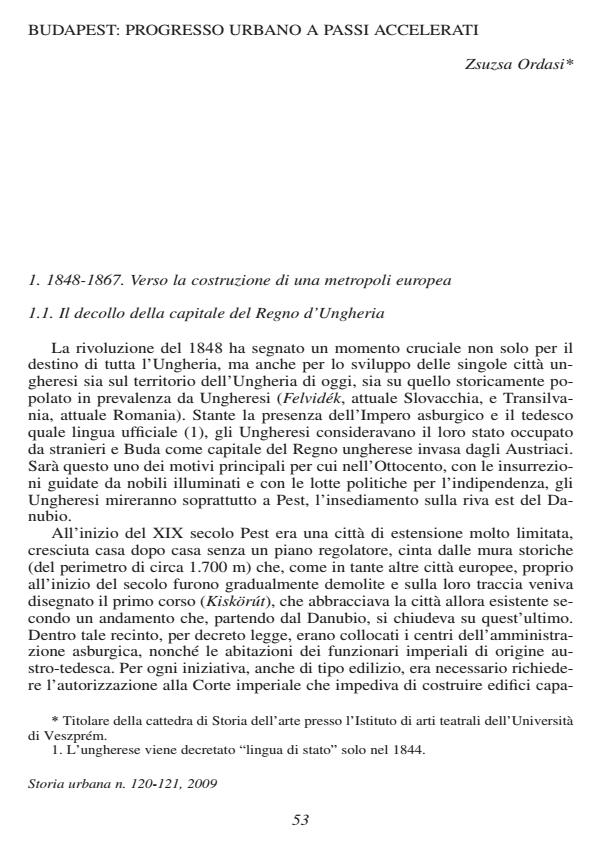Budapest: progresso urbano a passi accelerati
Journal title STORIA URBANA
Author/s Zsuzsa Ordasi
Publishing Year 2009 Issue 2008/120 Language Italian
Pages 28 P. 53-80 File size 4234 KB
DOI 10.3280/SU2008-120003
DOI is like a bar code for intellectual property: to have more infomation
click here
Below, you can see the article first page
If you want to buy this article in PDF format, you can do it, following the instructions to buy download credits

FrancoAngeli is member of Publishers International Linking Association, Inc (PILA), a not-for-profit association which run the CrossRef service enabling links to and from online scholarly content.
Budapest: accelerated urban progress - Unlike other great cities of Europe, Budapest did not experience any significant urban development before the nineteenth century, especially before 1867, the year of the foundation of the Austro-Hungarian Monarchy. After that, the city became the second pole, after Vienna, of this important European state. The capital of the Kingdom of Hungary grew through the use of various types of urban architecture and especially through a "style" that was meant to express Hungarian national identity. Architects, engineers, and other professionals from Hungary and Austria contributed to this process of modernization as well as many foreigners from Germany, France and England. The city’s master plan - modeled after Paris’s - focused on the area crossed by the Viale Sugár [Boulevard of the Spoke] was set on the Parisian model and so covered only certain parts of the city. The Committee on Public Works (1870-1948) played a leading role in putting the plan approved in 1972 - into effect in all aspects of urban planning, architecture and infrastructure.
Zsuzsa Ordasi, Budapest: progresso urbano a passi accelerati in "STORIA URBANA " 120/2008, pp 53-80, DOI: 10.3280/SU2008-120003